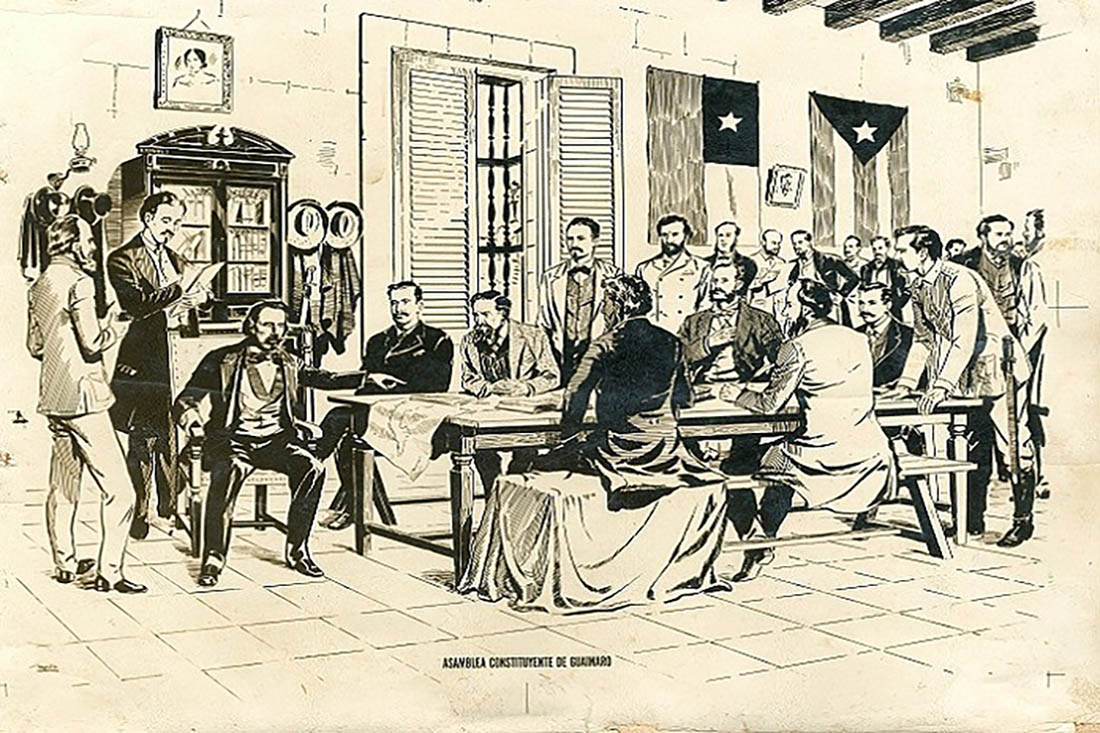The surprise that Guáimaro gave Spain
It has not been specified by the national historiography if the initial surprise of the celebration of the Assembly of patriots that took place at the end of Cuba long and narrow and news passed to the captain general for that reason it was decided to immediately launch a large-scale military offensive to try to abort the rebel conspiracy.
What would the police officers and even the military themselves know or not know of the rich Camagüey territory of Guáimaro, a territory covered with farms for breeding and fattening cattle and horses, magnificent arable land for tobacco and sugarcane, among other crops and fruits.
Guáimaro, who had an Aruaco appointment lost in the long historical duration; it was drawn with little more than ninety blocks and twenty straight streets on the Camino Real de Cuba (to Santiago de Cuba); with a similar number of houses of good size; central square where the masonry Church stood… And it was a town of work and culture, but an insurrectionist, since the day of Joaquín de Agüero, who had collaborators there and where the first blood for freedom was shed, in 1851.
And in 1968, after the armed uprising of Las Clavellinas, on November 4th, the party led by Luis Magín Díaz and the Arango brothers, followed by other patriots from Puerto Principe and with the support of local Guaimareños, such as Gregorio Goyo Benítez and Pedro del Risco Téllez, among others, was able to take the Spanish military garrison, becoming the town the first free territory of Camagüey in Arms.
There were sufficient historical reasons for the people of Guaimaro to feel proud, more so for knowing that this land had been chosen by the leadership of the Revolution to host the first Mambi parliament, which on behalf of the people of the Island-archipelago would raise their voices in Assembly to oppose with all its possible powers, from which they were democratically attacked, the Cuban Free State to the Spanish colonial State; Insurgent State that would have as guarantor to make effective the supreme mandate of the Assembly and that of the elected Chamber, the Cuban Liberation Army.
Carlos Manuel de Céspedes and his men passed the Jobabo river, on April 9th, 1869. It was the hydrographic border of the vast Camagüey, and of Guáimaro, although to tell the truth, for the Bayamés leader, borders were never drawn in the vast Camagüey, much less Guaimaro, who received him and enjoyed his recitations in family gatherings. He entered its square through Polo Ártico Street.
At just over noon, Ignacio Agramonte would arrive with his men. It was Saturday April 10th. It was a special jubilant day. The appointment had as its crucial objective “the union of all the departments under a democratic government.”
So much was debated and so much was sacrificed by each one of the delegates so that the Revolution emerged triumphant, even the lack of mentalities and political limitations that reigned in the group of souls present there; where only a woman’s head could appear on the day of the attack of the highest state representation, however none of them black or mestizo, many who were already joining the insurgent ranks.
And the same pride that the people of Guaimaro had when they found out that they were the seat of the emerging Republic was the same that led them to prefer to set fire to the insurgent hamlet before it was taken by the Spanish, a month later. Céspedes did not flee, he went with the Chamber and his escort to El Berrocal hacienda. The Revolution would continue.
And one of those attending that Assembly would go out to battle with unwavering faith so that all over Cuba would hear the only motto: “May our cry be forever: Independence or Death!” That was Major General Ignacio Agramonte.
Translated by: Aileen Álvarez García






